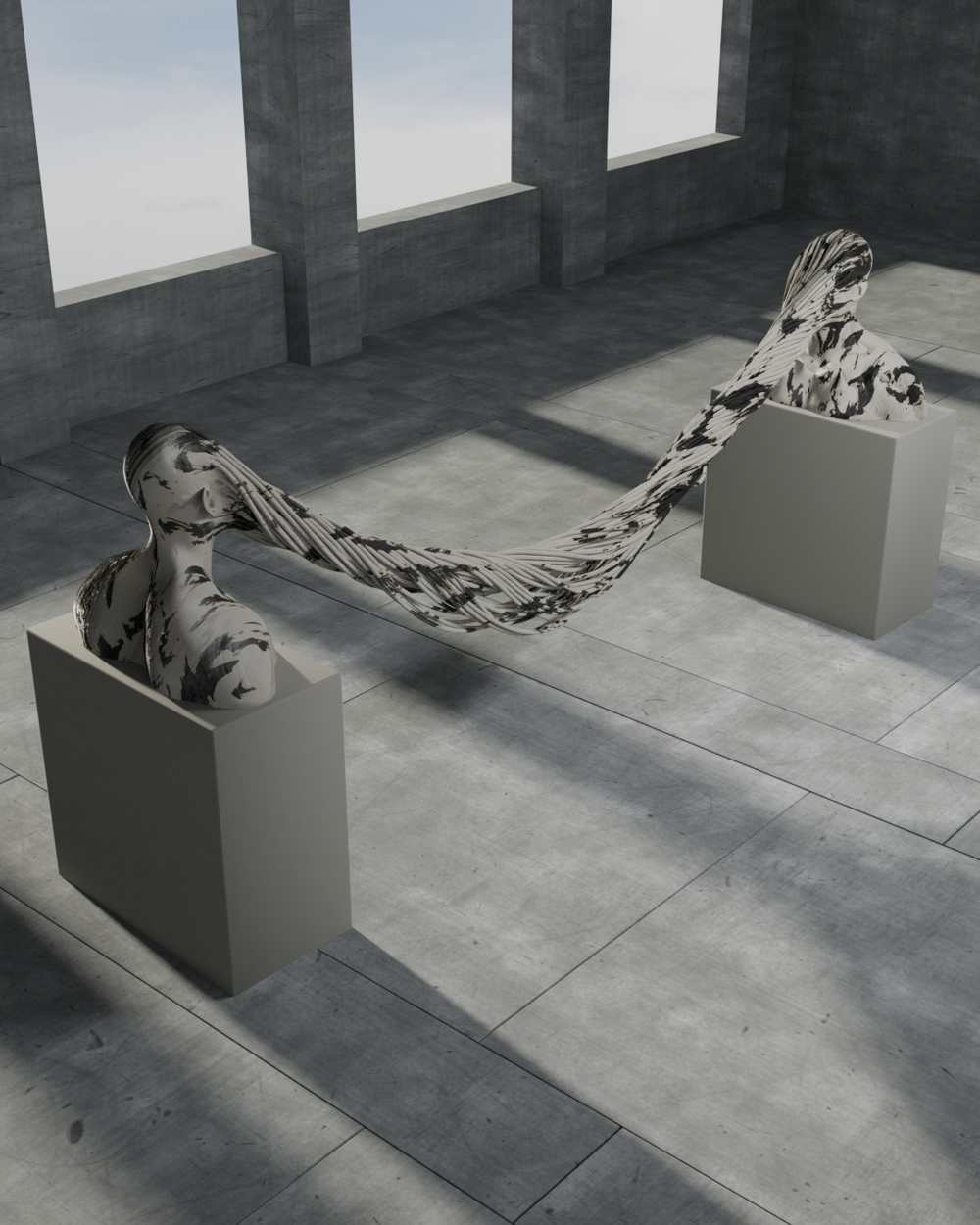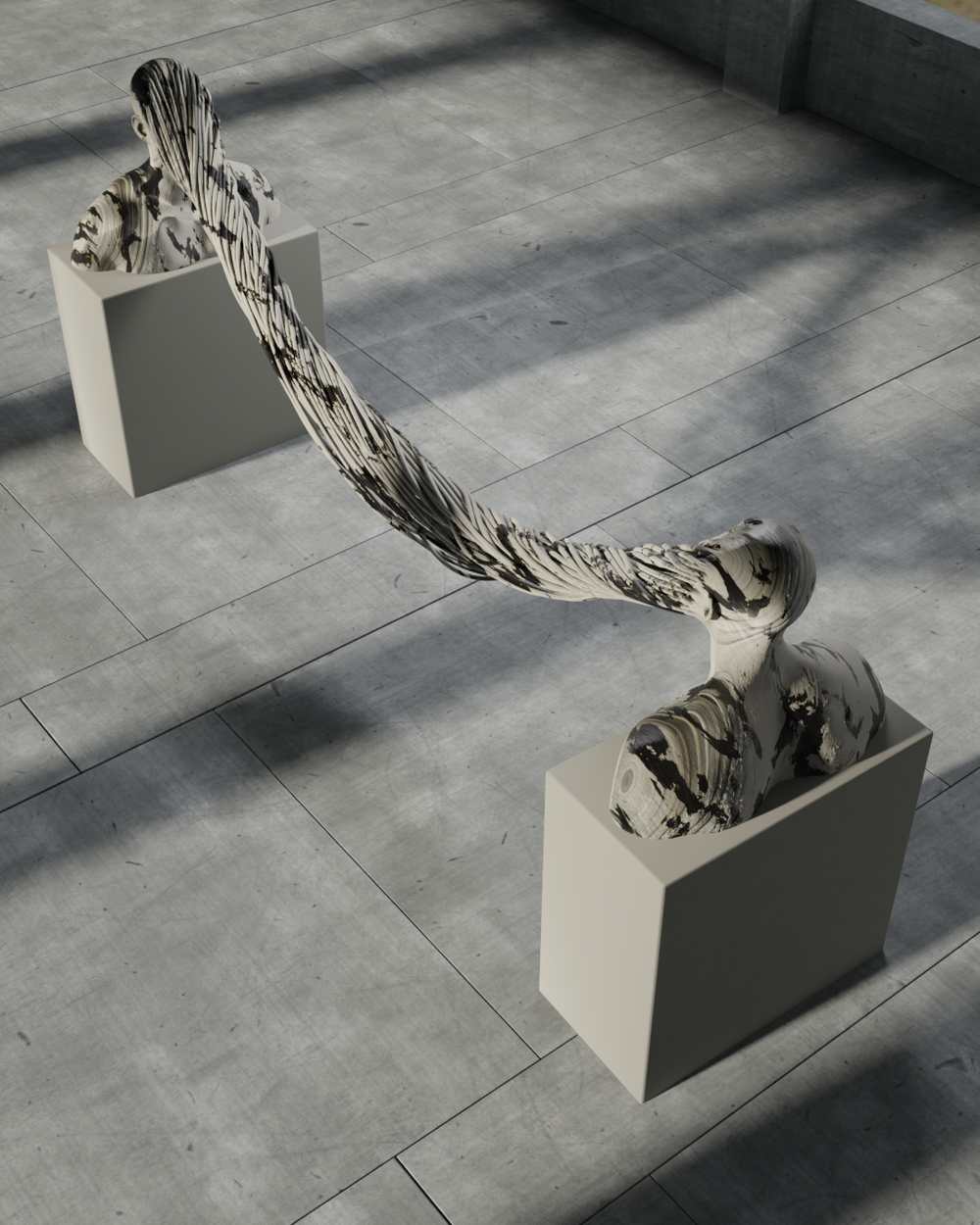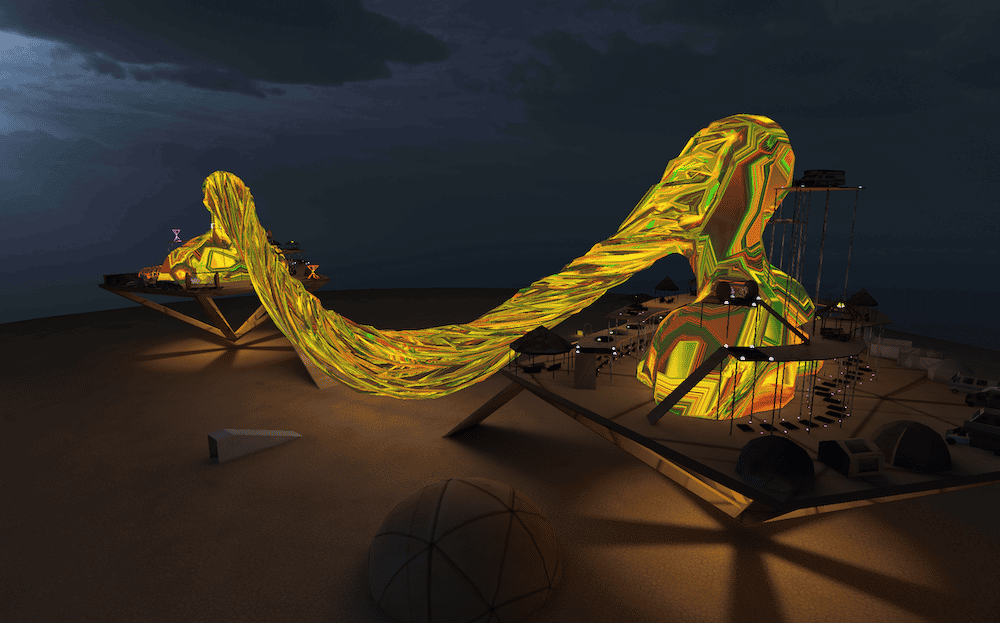Janus Study: A confrontation of the past and the future
By Amay Kataria | Jun 1 2022 · 5 min read
Amay Kataria writes about his ongoing reinterpretation of Janus — a two-faced Roman mythological figure, and one of the oldest symbols associated with the temporal nature of our Universe.


Janus Study, courtesy of Amay Kataria & Phil Mulliken


Janus Study, courtesy of Amay Kataria & Phil Mulliken
A guardian of time; a presider over beginnings and endings; a renderer of gateways, passages and doorways — this is how Janus is traditionally embedded in ancient Roman mythology. It is depicted as a two-faced figure, one pointing to the past and the other to the future. Assigned the stature of a god, the figure has appeared in multiple traditions throughout the centuries and is part of humanity’s collective memory.
I became acquainted with Janus accidentally while mining the book The Ghost in the Machine, by Arthur Koestler. A philosophical discourse in its most objective sense, it introduced Holarchy — a new epistemological tool to deconstruct knowledge and the complexities of nature into a Holon, an autonomous entity that is simultaneously a part and a whole. It was then that Koestler first introduced Janus, a two-faced Roman god as a metaphor to explain the duality of a Holon.
This ancient symbol and its meaning became a fascination for me at a time when the coronavirus pandemic took over the world. The lockdown drastically changed the way I occupied space, and slowed down my experience of time. It left me grappling for something more than just the lived experience.
To express this dilution of time, I decided to repurpose the Janus symbol using computer-aided tools, to reflect upon the present moment.
The two heads were flipped, drawn apart, and twisted into each other — breaking apart the monad, yet keeping its singularity intact.
Procedural modeling, along with computational gravity, was applied to model the fuzzy, twisted entanglement, creating a sagging effect on the strands. The meanings were turned upside down, the past now confronted the future, rather than looking away from it. The drag of boredom and the uncertainty about the present were embodied by this newly constructed space between the two heads.
This reinterpretation of the Janus symbol first appeared in ‘Janus Study’, where it was set up as a digital sculpture sized at a human scale, situated in an empty concrete room. Produced as a 7.5-minute video work, the camera languidly revealed the form while provoking a corporeal contemplation about this sculpture.
On the 3D asset and its flexibility
The sculpture demanded scale and user interaction, which led to an immersive art installation developed for the Burning Man festival in the Metaverse, in 2020. A social virtual reality world called ‘Timekeepers’ was designed, that repurposed ancient symbols of time to create a site of philosophical introspection and deliberate play. Consequently, it has become a space to provoke and participate in conversations about deconstructing our everyday understanding of time.
We live in the era of the Metaverse, an abstraction on top of multiple virtual realities that have sprung up in recent years. These realities are developed using an ecosystem of digital tools that reuse 3D assets. For example, the same Janus asset has been used in multiple environments such as a video piece, a social virtual reality world, and in an augmented reality setting.


Timekeepers, courtesy of Amay Kataria & Phil Mulliken
Depending on one’s creative imagination, this asset can also be presented with unique aesthetics. By crafting a custom material to look like it is carved out of stone, or made with polished gold, or precisely hand-painted, or constructed with delicate foliage, one can superimpose multiple layers of meaning on top of its existing connotations of temporality.
Amay Kataria is a Chicago-based Indian visual artist, exploring the idea of “communal computing” with new-media technologies. To view the 3D collectible asset created by Kataria, click here.


